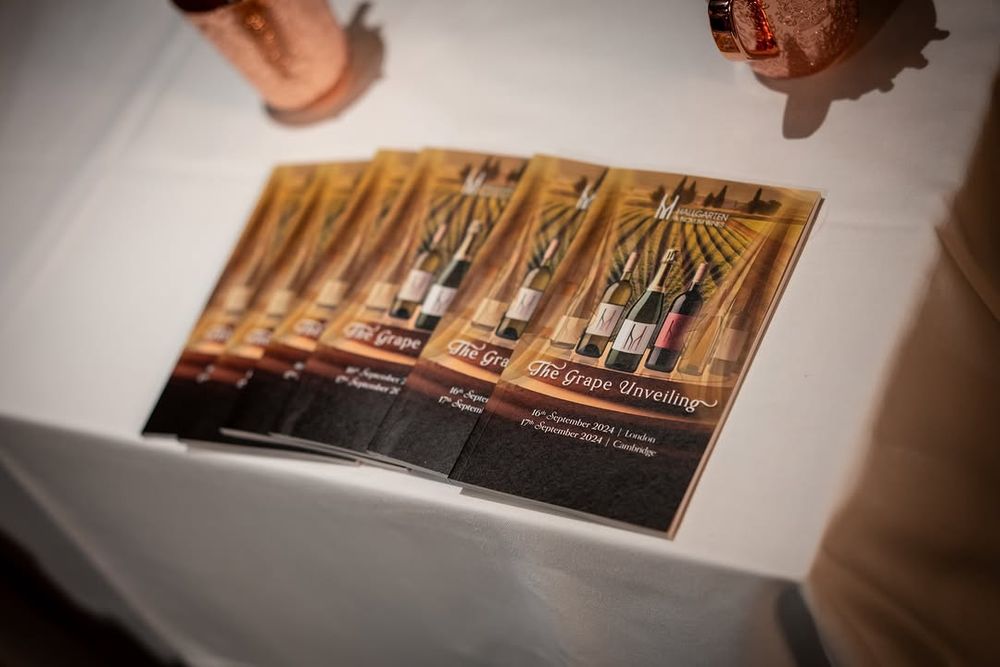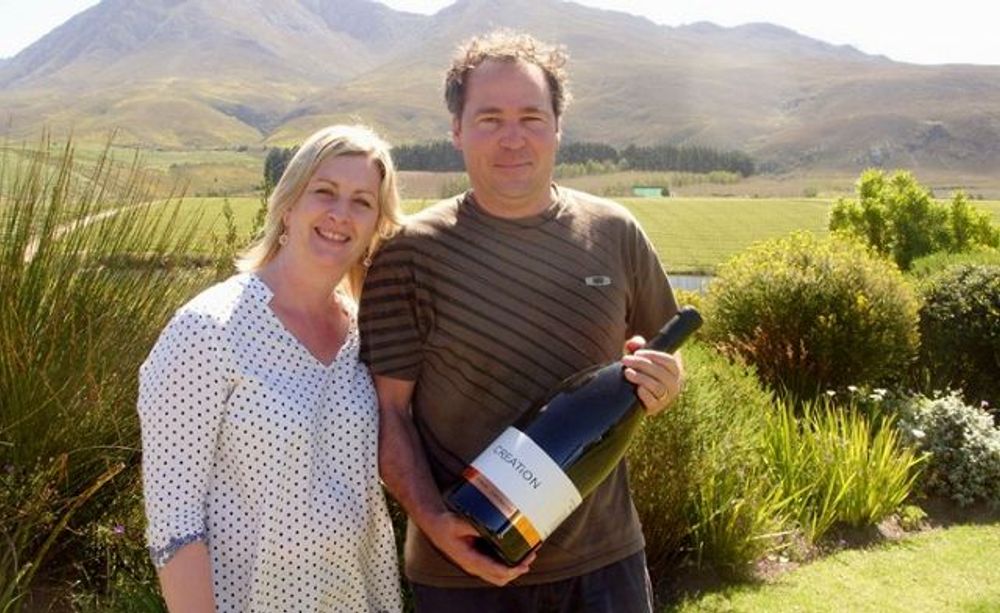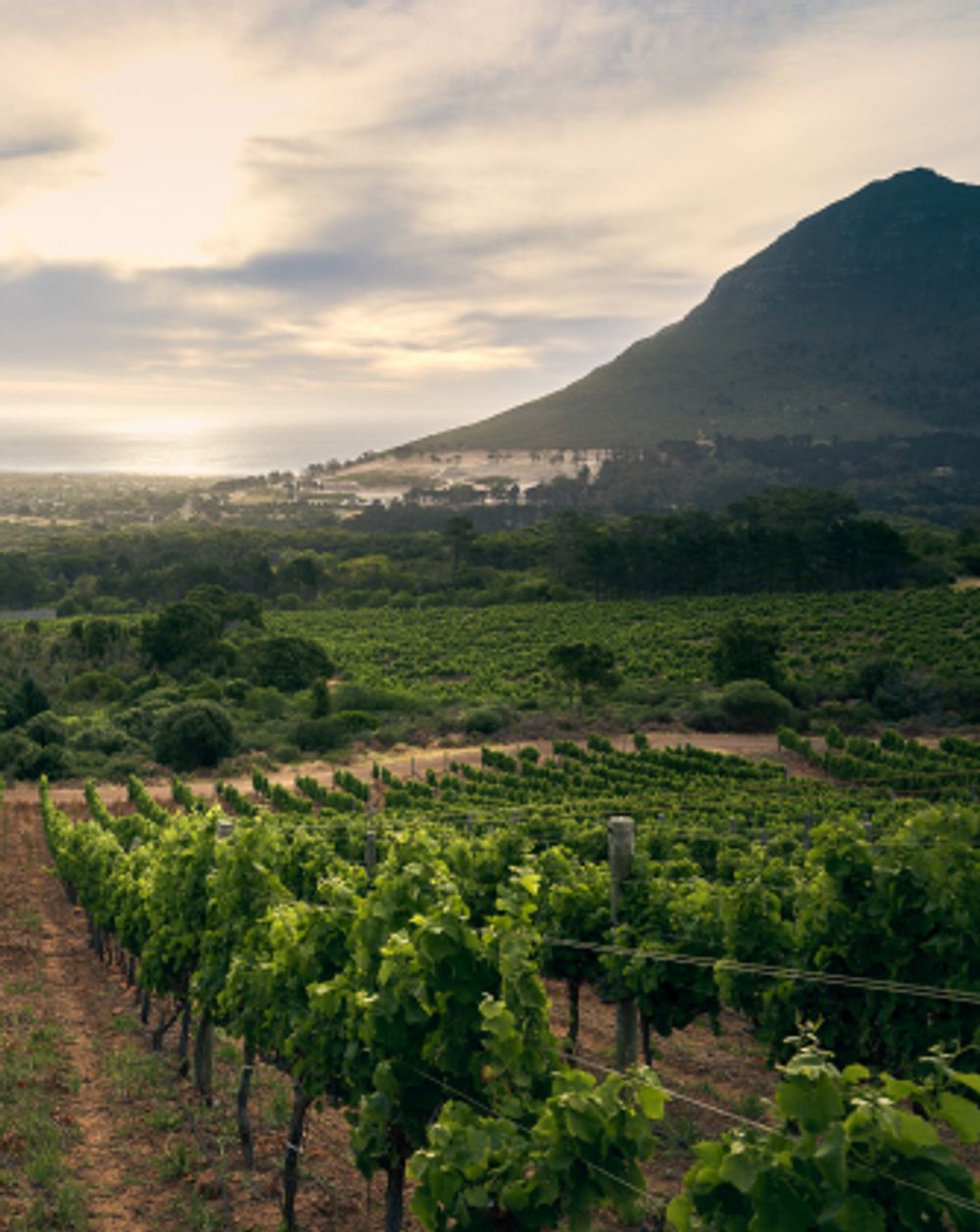These have been busy times at Hallgarten & Novum Wines. The acquisition of the business by Coterie Holdings in December 2023 has completely reinvigorated an already dynamic and innovative business and a wave of new staff appointments and lots of new wine agencies have followed.

Hallgarten & Novum's Grape Unveiling tasting
Some of these agencies are familiar to the UK trade, moving across from other importers - these include Quinta do Vallado from Portugal, Sella & Mosca from Italy (Sardinia), Llopart from Spain (Catalonia) and, from ‘Down Under’, Yering Station and Mount Langhi Ghiran. Others are entirely unfamiliar and sometimes almost brand new including La Collina dei Ciliegi from Italy and Navitas from Greece.
And more producers are expected to be unveiled ahead of HN’s biggest ever tasting on January 27-28 next year where the group will show around 1000 wines over two days in the former Billingsgate fish market in the City of London.

I caught a sense of this bullishness at The Grape Unveiling tasting in London on September 16. At a time when the drinks industry is facing huge challenges the mood was seriously upbeat… this, despite the complex and probably unworkable new excise structure that is due to come into effect next February, alongside falling real consumer incomes and National Insurance increases which may put some small employers out of business altogether.
“Working at HN you really get the sense you are in the right place at the right time,” one senior staff member said to me above the buzz of the tasting, held in Gordon Ramsay’s Bread Street Kitchen in the City.
So how were the wines? Obviously with 23 producers – and each showing, typically six or seven wines – there was a lot to take in but here are seven standouts.

One of the best-known names in Sardinian wine has completely reinvented its budget and mid-range lines and the result is some cracking good wines at great prices (typically under £20).
The Madeus Cannonau 2023 is full on, very expressive and not shy (14% abv) but never too overwhelming, dark fruit giving a spicy brambly feel. Likewise, the bright straw coloured, floral, herb-driven almost sumptuous Monteoro Vermentino 2023 from the Vermentino di Gallura DOCG: there’s no oak here, the richness imparted by four months lees ageing. As HN Wines’ head of buying, Steve Daniel, says, “Vermentino is becoming increasingly popular from such places as Tuscany and Provence, I thought we would offer a great wine from a region which has been excelling in the variety for years.”

According to Steve Daniel, the best wines – certainly the most interesting – are those that tell a story and his new addition to the group’s already extensive Greek range is this new boutique producer, based on the slopes of Mt Olympus, famously home to the Greek gods.
Navitas in Latin means ‘re-birth or energy’ and that is what winemaker Maria Dimitriadis brings to her range, made in the Land of Zeus, now on the third vintage, Maria practises “mindful winemaking” to make meaningful wines and the range is certainly that.
The Malagousia 2023 is organic and single vineyard, very expressive and, at 12.5% abv well balanced, with suggestions of herbs on the long finish. The Assyrtiko 2022 is a delight, very different to its Santorini cousins but showing salinity, herbs and good but not excessive acidity. The Xinomavro 2021 will really appeal to Nebbiolo fans – lots of smoky dark fruit, a fine bone of acidity running through to a warm long finish. All very enjoyable and good value at around £20-24 retail.

There was an almost continual queue at this stand and on tasting the wines I could see why. Although established only in 1947, Palmer is one Champagne’s great names, today making around one million bottles and eight marques of wine.
Standouts for me were the Blancs de Blancs NV, 100% Chardonnay, eight years on the lees and five in bottle. Quite delicious, a firm but creamy mousse leaving a long finish. The rosé Solera NV, comprised of 45% Chardonnay. 35% Pinot Noir and 20% Meunier, is unusual in that 5-7% of the blend is red wine kept under solera, and up to 35% reserve wine – hence the NV – making for a robust, spicy, cinnamon finish.
I loved the Grand Terroirs 2015 a blend of grapes (50% Chardonnay, 38% PN and 12% Meunier) taken from the seven original vineyards that, back in 1947, went to make up Palmer. The pièce de resistance, however, was the very rich and moreish Amazone de Palmer NV, an almost equal Chardonnay/Pinot blend of three vintages 2012, 2010 and 2009. Only made every five years – and just 20,000 bottles – this gets its incredible richness from the grapes spending ten years on their lees. Really quite exceptional sparklers.

Not being overly familiar with Chile, I was new to the wines of Alex and Carrie Vik, who established their 4,400-hectare property 20 years ago, and, frankly, I felt I have been missing out.
Vik is a mix of traditional and modern; it has its own cooperage, blending French and Chilean oak located in an ultramodern winery that looks like something straight out of a Bond movie, based in what looks like a stunning location 50 kilometres from the coast – Millahue (which translates as ‘Place of Gold’) – between lake and mountains, in the Valle de Cachapoal denomination.
The entry level Carmenere Omega 2022 is pleasantly moreish, capturing the richness of this variety, with forest fruits and pepper on the medium weight palate. However, I was blown away by the Vik Millahue 2019, a blend of 77% Cabernet Sauvignon and 23% Cabernet Franc grown in high altitude vineyards. Really very special.

Fully biodynamic, this boutique producer – run by husband-and-wife team David Sampedro and Melanie Hickman – very much focuses on tradition in its wine growing and making; just horses and no tractors are used in the vineyard and the stress is on indigenous varieties and terroir-driven wines.
Making around 60,000 bottles in their Rioja Alavesa vineyard, Sampedro was showing eight wines of which the standouts were the Prince La Revilla Blanco 2015, made from 60-year-old vines, skin fermented and then spending six years in barrel. Slightly pink in colour, this 100% Viura showed exotic fruit and spice.
Its red counterpart La Revilla Tinto 2015, made the same way but with 100% Tempranillo had a fascinating palate, with spice and balsamic notes reflecting the ancient limestone and clay vineyards in which just the most select grapes are used. Unique, and quite special.

Steve Daniel reckons South Africa is one of the most exciting countries in the world for wine right now, offering great quality and excellent value and, to prove it, he has signed at least three new producers. I was fair blown away by the wines made by Creation, a newish venture started by a Swiss-South African couple which has already won many awards.
Located in Hemel-en-Aarde, Walker Bay, home to some of South Africa’s best cool climate Chardonnay and Pinot Noir, they produce a range of excellent wines including the well-priced (not quite entry level) Viognier 2023 and Chardonnay 2023.
However, I was really taken by their Syrah-Grenache 2022 (75% Syrah, 25% Grenache). The grapes are fermented in large foudres and stainless-steel tanks. Maturation lasted 14 months in 25% new wood and 75% second and third-fill French oak barrels, the result being a delicious medium weight wine, dark berry charged with spice and black pepper on the finish.
Even better is the silky, well-made Art of Pinot Noir 2023, medium weight again but very full flavoured and velvety, with complex suggestions of cherry and plum mingling with an elegant sprinkling of spice and pepper. Really good but will get even better with some age.

This estate calls its story “a Cinderella story” and you can see why. Owner Tim Rudd and winemaker Kiara Scott Farmer – together with consultant Duncan Savage – have completely revitalised an unloved and unwanted 67 hectares land near Paarl, at the foot of the Klein Drakenstein creating a wine estate marking first class wines from old vines – some planted back in the 1980s.
They produce a cracking value, screw-capped GSM 2023 (actually a GSCM as Cinsault is there, alongside the Grenache, Syrah and Mourvèdre), with dark brambly fruit, cherry and lean but mouth-filling intensity.
The jewel in the crown here is the Brookdale Estate’s Paarl Old Vines Chenin Blanc 2023. Grown in vines planted in 1985 in stony shale and granite, located at 350m above sea level; no fertilisers are used and everything is done by hand. A delicious, quite rounded wine with layers of pear and a hint of honeycomb with a long, salty, mineral freshness to the finish.

Anyone who knows me might recall that Sauvignon Blanc is not exactly my favourite grape variety but Daniel says South Africa is now making some of the best – very different from the more ‘in your face’ style popularised by New Zealand – and no one does it better than this producer just signed up by HN.
Located between two seas on the narrow Cape Peninsular in what is probably one of the world’s most spectacular locations for a vineyard, Cape Point has built up a world class reputation since its first vintage back in the late 1990s. Today it makes a range of Sauvignon Blancs including the Cape Town Isliedh; the 2023 vintage was a low yielding one thanks to some seriously bad weather but this wine – Sauvignon Blanc 70%, Semillon 20% and Sauvignon Gris 10% – is moreish, with a long, complex, mineral and saline finish.

A new, high-altitude producer in the Valpolicella region, the focus here is on low intervention winemaking, letting the terroir and fruit show through. Its first vintage was in 2015 and since then volume has reached 60,000 bottles with a capacity of 100,000, all interesting and often quite removed from what you’d expect in this region.
“Our main priority in all our wines is drinkability,” says export director Alessandro Marchesan.
The Peratara Valpolicella 2019 is a case in point, the Corvina shines through and the wine is rich, spicy and sumptuous but also quite light, reflecting the altitude of the vines, and the 13.5% alcohol is well disguised. Valpolicella but not as we know it.
Likewise, the Amarone 2020, produced from vines at 600m altitude (this may have 15% abv but it really doesn’t feel it) the fruit – Corvina (70%) Corvinone 25% and Rondinella 5% – show through, quite deliciously.
The Bianca Verona Prea is similarly off-piste, a blend of 80% Garganega and 10% each of Pinot Bianco and Chardonnay. Whole grape clusters are pressed, then fermented in concrete tanks before the wine is aged for two years in concrete and Clayver ceramic barrels, with an additional six months in bottle. A lovely full, mineral palate with white pepper and herbal notes; aromas are layered with exotic fruits through to a full and refreshing palate.
Hallgarten & Novum Wines is a commercial partner of The Buyer. To discover more about them click here.







































